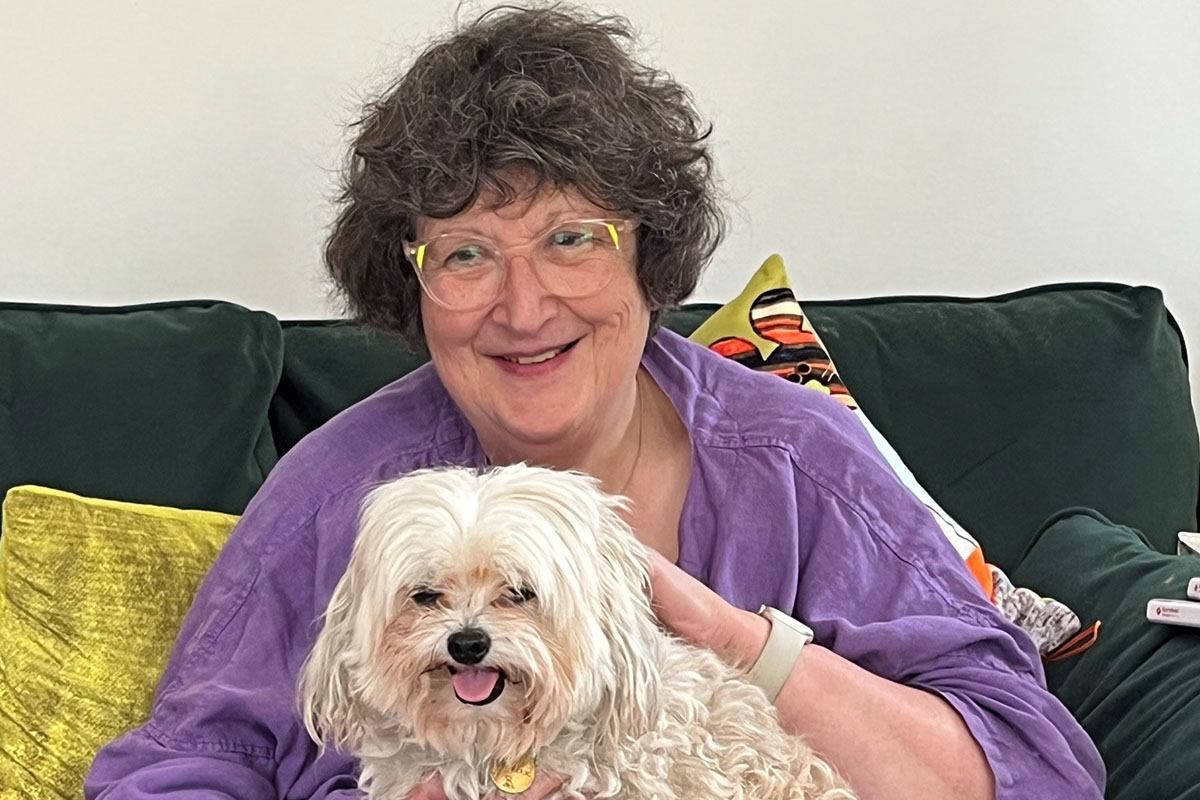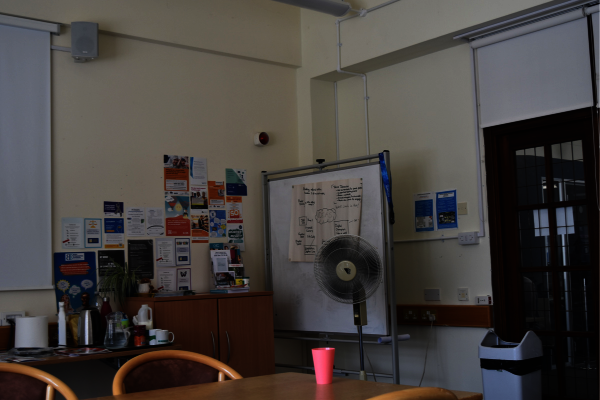Sheila’s story – making a home accessible for independent living

Sheila Dearns is a retired teacher living in Chelmsford, Essex, with her dog Charlie, a chihuahua poodle cross. She was diagnosed with secondary progressive multiple sclerosis (MS) and became disabled in 1993.
Sheila moved to her current bungalow in 1996 when she could no longer manage the stairs in her previous home and continued working as a teacher until 2010 when she took early retirement. Now 68, Sheila tells us about her experiences making her home fully accessible to support her goal of living independently.
“One of the things I realised after I became disabled is that apart from the actual physical disability, the next thing you lose is confidence. You don’t think you can do anything, you don’t think you’re worthy and you think you’re worth less. That, I think, is a big issue and I think it’s also an issue for older people as well. But it’s not true – disabled people and older people have a huge contribution to make.”
Sheila has been living in the same home for almost 30 years now. Since moving to her bungalow in 1996, she has been able to live independently at home, as well as get out of the house to go to work, see her neighbours and run errands.
“For me it’s absolutely ideally suited. It takes me two minutes to get to the village square where there are various shops and a supermarkets and it’s very close to my doctor’s surgery. I can get to town on a [mobility] scooter, I can do just about anything.”
Since moving to her bungalow, Sheila has been making small changes to the accessibility of her home to support her, including converting the bath to a shower. But a recent decline in her mobility got her thinking about more drastic changes to her living situation. She considered looking for a different home but felt the chances of finding something that exactly met her needs were “practically nil.”
Around the same time, her neighbours were having work done to their home by local builders, so she took the opportunity to ask one of them to come in and have a look around.
“The very first thing he said was ‘if you move the bedroom door then that gives you a lot more space’ – and I thought it was genius, because he was absolutely right.”

Inspired by the builder, she contacted a few different architects to give her some ideas, as well as an accessible kitchen designer. She then contacted a number of different building firms to get quotes for the work.
Using a loan from the bank, equity release, money she had recently inherited and some insurance money, she managed to fund extensive works to her home.
This included widening footpaths outside the property to make them wheelchair accessible, creating level and ramp access all around the garden, reconfiguring the inside of her home to make it more open plan and wheelchair accessible. The work included creating a new kitchen-diner and installing a level-access shower and also providing her with direct access to her scooter shed from her dining room.
Sheila reflected on the impact these changes have made to her daily life.
“The fact that I can actually get around my house in a wheelchair is absolutely ideal because the way the house was before, I couldn’t have done that. And because this year there has been a sudden steep decline in my mobility, and I now cannot walk more than a few steps. So with these changes I can still get around the house, I can get straight out the front door with my little dog, take him out for a walk, it’s a nice peaceful area with no traffic because there are walkways all round the estate, meet other dog walkers, of which there are many. I can actually cook a meal and not just stick something in the microwave because I can sit down and prepare the food and sit down and cook it.”
While she recognises that from a financial point of view she has been fortunate and “that not everyone else will be so lucky”, the process hasn’t been easy.
While the works were being carried out, Sheila rented a cottage that was meant to be accessible. But she discovered that it couldn’t be reached by mobility scooter, requiring Sheila to go back home and be confined to one room in an environment that resembled a building site.
“I had in my bedroom a coffee machine, a kettle, and an air fryer. I also had an armchair toilet.”
Sheila also had to make further changes when she realised that the original patio door that had been reinstalled was not suitable for wheelchair access and needed replacing shortly after the work was finished.
Despite these hurdles, Sheila believes it has all been worth it in the end and has allowed her to achieve her aim of continuing to live independently in the home that she loves.
“It actually makes me feel very happy because I can stay in this house. For me, this house is as near perfect as it can get. I’ve got a lovely garden. I’ve actually got flowers in here but I don’t have a lawn because of the slope its difficult to keep it. I get birds in here, I get hedgehogs in here, I’ve had a fox. I just absolutely love this house. And now I can stay in it.”
Sheila recognises that everyone has different needs and they may not have the same experiences as her, but she hopes that by sharing her story she will support others to consider what they need to live well.
“Older people, and especially disabled people, need to accept that they have as much right to a good life as anybody else.”



